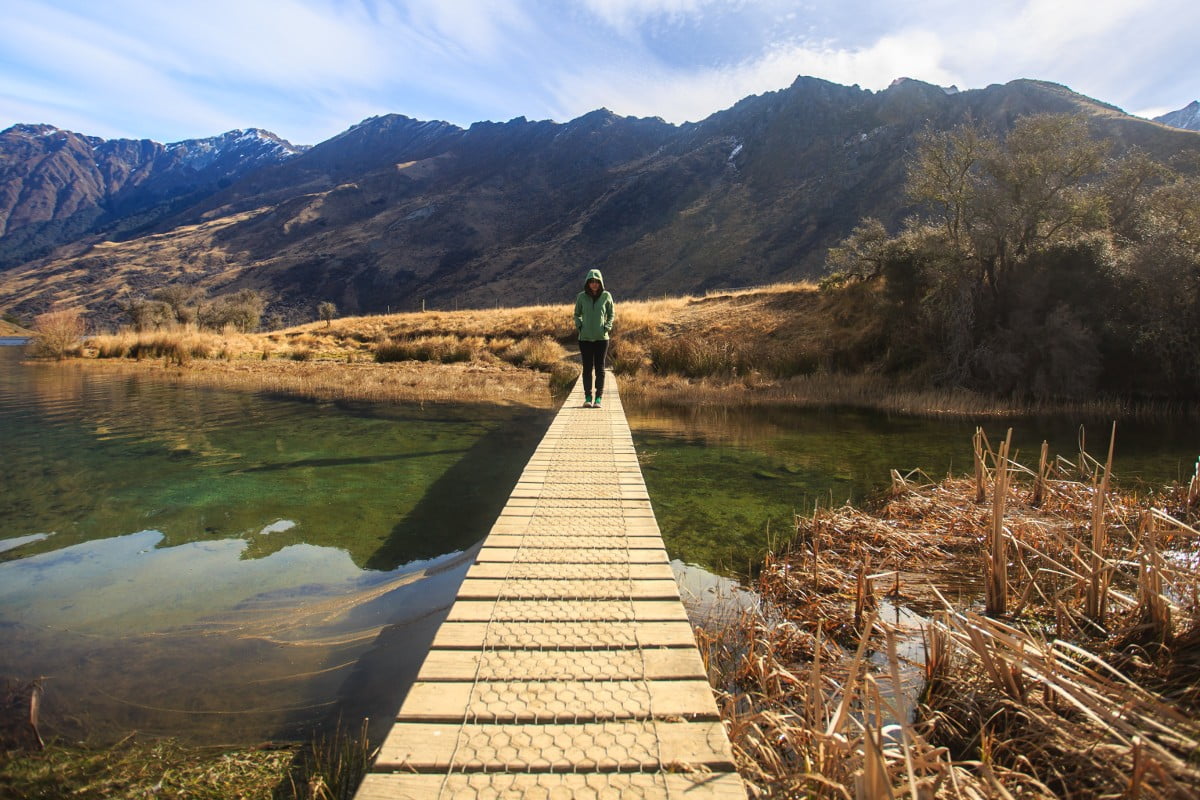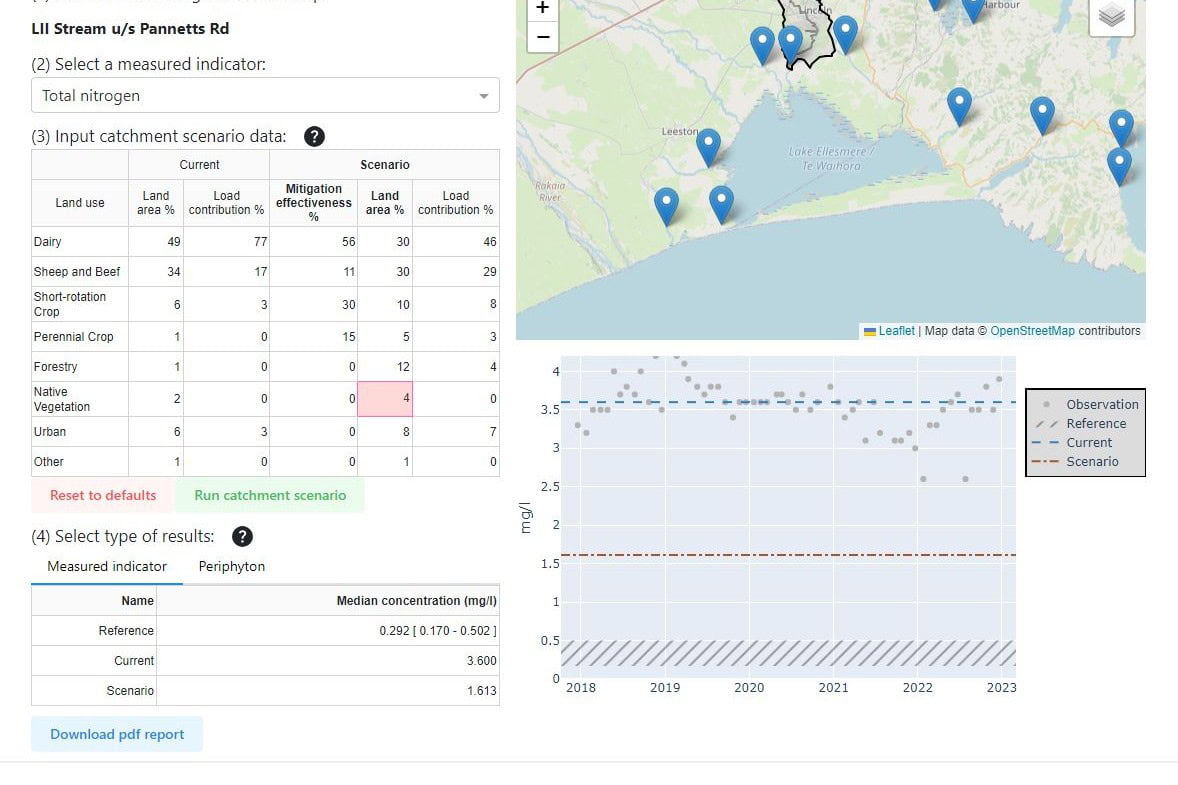August 30, 2024
-
- About UsMā mātou
- Our ScienceTe pūtaiao
- Future Landscapes Ngā Horanuku AnamataIn the future, landscapes will contain mosaics of land use that are more resilient, healthy and prosperous than today.
- Assessing Contaminants with Stream Order
- Benign Denitrification in Groundwaters
- Cascade of Soil Erosion
- Connecting Soil and Water Quality
- Crop Disease Under Climate Change
- Faecal Source Tracking
- Healthy Estuaries
- Innovative Agricultural Microbiomes
- Interoperable Modelling
- Land Use for Nutritious Diets
- Land Use Opportunities
- Land Use Suitability
- Linking Legacies to Wai
- Mapping Freshwater Contaminants
- Matarau: Empowering Māori Landowners in Land Use Decisions
- Measuring Denitrification
- Monitoring Freshwater Improvement Actions
- Mosaic vs Monoculture Landscapes
- Next Generation Systems
- Pasture for Humans
- Peri-Urban Potential
- Phosphorus Best Practice
- Physiographic Environments of New Zealand
- Pohewa Pae Tawhiti
- Protein Future Scenarios
- Silvopastoral Systems
- Sources and Flows
- Visualising Forestry Harvesting Cycles
- Incentives for Change Ngā Poapoa PanoniWe want to reward New Zealand’s primary producers for producing high-value products in sustainable ways.
- Aotearoa Food Cultures
- Appropriate Use of Taonga Species
- Credence Attributes On Farm
- Early Māori Agricultural Entrepreneurship
- EU Green Deal: Impact on NZ Exports
- Eutrophication Product Footprinting
- Impact of Imported Feed Shortages
- Incentives for Data Sharing
- Indicators Working Group
- Integrating Value Chains
- Kaitiaki Intelligence Platforms
- Kuaha Matihiko: Digital Gateway
- Measuring Full Impacts of Land-Use Change
- New Models of Collective Responsibility
- Options for Rural Investment
- Reasons for Water Quality Improvement
- Regenerative Agriculture
- Register of Land Management Actions
- Rewarding Sustainable Practices
- Signals for Land Stewards
- The Matrix of Drivers
- Workforce Implications of Land-Use Change
- Pathways to Transition Ngā Ara WhakawhitiWe are growing understanding of what it takes to transition to resilient, healthy and prosperous futures, and are developing tools to help.
- Connecting Food Producers & Consumers
- Diverse Experiences of Farming
- Enhancing Assurance Schemes
- Future Scenarios for Arable Agriculture
- Implementing Te Mana o Te Wai
- Land-Use Scenarios for Nikau Farm
- Lessons from Our Land and Water
- Mauri Whenua Ora
- Ngā Tai-o-Rongo
- Predicting Agricultural Research Adoption
- Retiring Farmland into Ngahere
- Revitalise Te Taiao
- Rural Professionals Fund 2020–21
- Rural Professionals Fund 2021–22
- Rural Professionals Fund 2022–23
- Rural Professionals Fund 2023–24
- Science in Freshwater Policy Development
- Shared Vision for Land Use in Marlborough
- Storying Kaitiakitanga
- Synthesis Scenarios for Future Land Use
- The Collaboration Lab
- Trust and Social Licence
- Urban-Rural Partnerships for Equal Change
- Whenua Life Values
- Future Landscapes Ngā Horanuku AnamataIn the future, landscapes will contain mosaics of land use that are more resilient, healthy and prosperous than today.
- News + EventsHe pānui
- Resources Ngā rauemi
- View by topic
- Climate Change
- Collaboration
- E.coli
- Farm Environment Plans
- Farm Management
- Farming for Good
- Increasing Value
- Irrigation
- Land-Use Change
- Measuring Water Quality
- Mitigation
- Nitrogen
- NPS-FM
- Nutrient Management
- Phosphorus
- Regenerative Agriculture
- Sector Transformation
- Sediment
- Social Licence
- Te Ao Māori
- Te Mana o Te Wai
- Winter Grazing
- View by topic
- Outcomes Ngā puawaitanga
Resources for
Government
Koon Chakhatrakan, Unsplash
You are here: Home Roles Government
People who work in government ministries and agencies can implement policies that support farmers and growers to restore soil, waterways and wildlife, while they grow great food. These resources can help guide a transition to mosaics of land use that are healthy, prosperous and resilient.
Showing 1 - 12 of 263 results
Guidance
How to Talk About the Future of Farming in Aotearoa New Zealand
This guide is to help people talk effectively about the future of farming, and land-use change in particular, to the general public and farming communities…
Technical Report
Faecal source tracking and the identification of naturalised Escherichia coli to assist with establishing water quality and faecal contamination levels
E. coli are routinely measured as faecal indicator bacteria (FIB) to provide indications of microbial water quality in parallel with other physico-chemical parameters. Recent evidence…
Technical Report
Faecal source tracking to understand the role of introduced predators and avian species on water quality assessments in the Makiriri Reserve, Dannevirke
Escherichia coli are used as indicators of faecal contamination in water quality assessments, but ‘naturalised’ non-faecal E. coli and non-pathogenic E. coli-like bacteria can confound…
Technical Report
Barriers to diversification
This report covers a project funded by Our Land and Water, to investigate the challenges faced by landowners when they seek to diversify via land…
Journal Article
The implications of lag times between nitrate leaching losses and riverine loads for water quality policy
Understanding the lag time between land management and impacts on riverine nitrate–nitrogen (N) loads is critical to understand when action to mitigate nitrate–N leaching losses…
Guidance
Designing Freshwater Monitoring Programmes to Detect Early Improvement
This short guidance document is to support the design of freshwater monitoring programmes to detect early improvement and is for regional councils, government, and multi-agency…
Journal Article
Do soil cadmium concentrations decline after phosphate fertilizer application is stopped: A comparison of long-term pasture trials in NZ
Stopping phosphorus (P) fertiliser can decrease topsoil cadmium (Cd) concentrations. Stopping P fertiliser applications reduced soil Cd concentrations after 21 and 26 years. Reductions only…
Journal Article
Geography Matters for Small Advanced Economies: Implications for Economic Strategy
New Zealand is a small advanced economy in the South Pacific Ocean. Policy advisors often compare New Zealand’s economic performance with those of other successful…
Technical Report
An introduction and guide to the ‘alternative agricultures’: an enquiry into values
This report provides a short history of ‘alternative agricultures’ to show where regenerative agriculture has emerged from – and tackles the interesting question of whether…
Video
Perception of Drone Use in Environmental Management
Can drones be used to efficiently demonstrate environmental compliance and thus ecological sustainability? This short video describes research that investigated the perceptions of farmers and…
Technical Report
Revitalising Te Taiao: How to co-design a place-based approach to support purposeful change and resilience
Aotearoa-New Zealand and international examples were reviewed by the project team with a range of criteria detailed to allow for an analysis of what were…
Technical Report
Canterbury Farmers’ and Rural Professionals’ Perception of Drone Use in Environmental Management
The purpose of this research project is to identify barriers to, and incentives to overcome the challenges of, integrating drone use to achieve better environmental…
 View Our Strategy Document 2019 – 2024
View Our Strategy Document 2019 – 2024


